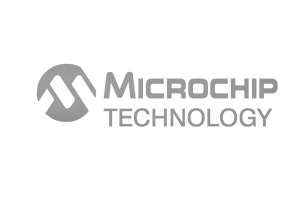ATSAMR30E18A-MUT Overview
The ATSAMR30E18A-MUT is an advanced low-power LoRa? transceiver module designed for long-range wireless communication applications. Integrating a high-performance RF front end with a flexible microcontroller, this device supports robust connectivity in the 868 MHz ISM band. It features a compact form factor and delivers excellent sensitivity and output power, making it ideal for IoT, smart metering, and industrial automation solutions. With built-in LoRa modulation capabilities, it simplifies the development of secure, reliable wireless networks. The module is available through IC Manufacturer, offering engineers and sourcing specialists a dependable integrated solution for next-generation wireless designs.
ATSAMR30E18A-MUT Technical Specifications
| Parameter | Specification |
|---|---|
| Frequency Range | 862?C1020 MHz |
| Modulation | LoRa?, (G)FSK, (G)MSK, OOK |
| Output Power | Up to +18 dBm |
| Receiver Sensitivity | Down to -148 dBm (LoRa, SF12) |
| Supply Voltage | 1.8 V to 3.6 V |
| Current Consumption (Transmit) | 26 mA at +14 dBm |
| Current Consumption (Receive) | 9.7 mA |
| Microcontroller Core | ARM Cortex-M0+ 32-bit |
| Package | 18 x 18 mm Module |
| Operating Temperature | -40 ??C to +85 ??C |
ATSAMR30E18A-MUT Key Features
- Integrated LoRa? Modem: Enables long-range, low-power communication, reducing development complexity and accelerating time to market.
- High Sensitivity Receiver: Down to -148 dBm sensitivity ensures reliable data reception in challenging RF environments, improving network robustness.
- Flexible Modulation Support: Supports LoRa, (G)FSK, (G)MSK, and OOK for versatile wireless protocol implementation beyond standard LoRaWAN networks.
- Low Power Consumption: Efficient transmit and receive current profiles facilitate extended battery life in remote and portable applications.
- ARM Cortex-M0+ Core: Provides embedded processing capabilities, allowing offloading of application code and reducing external MCU requirements.
- Compact Module Form Factor: Simplifies integration into space-constrained designs, enabling flexible deployment across various IoT devices.
ATSAMR30E18A-MUT Advantages vs Typical Alternatives
Compared to typical RF modules, this device offers superior sensitivity and output power, resulting in enhanced link budget and extended communication range. Its integrated microcontroller and multi-modulation capabilities reduce external component count and design complexity. The low power consumption makes it highly suitable for battery-operated systems, while the compact size supports versatile industrial and consumer applications, positioning it as a reliable and efficient solution in the low-power wide-area network segment.
🔥 Best-Selling Products
-

Texas Instruments BQ24075 Linear Battery Charger IC – 5mm x 4mm QFN Package
-

Texas Instruments INA219 Current Sensor Module – SOIC Package, Precision Monitoring
-

Texas Instruments LM4041 Precision Voltage Reference – SOT-23 Package
-

Texas Instruments OPA2134 Audio Op Amp – Dual, High-Performance, SOIC-8 Package
Typical Applications
- Industrial IoT wireless networks requiring reliable long-range communication with low power consumption, such as remote monitoring and control systems.
- Smart metering solutions, where precise and secure data transmission over extended distances is critical.
- Asset tracking and logistics management employing low-power wide-area connectivity for real-time location updates.
- Environmental sensing stations that benefit from compact size and efficient power usage for autonomous operation.
ATSAMR30E18A-MUT Brand Info
This module is part of a comprehensive portfolio emphasizing robust wireless connectivity solutions tailored for industrial and IoT markets. It leverages proven semiconductor technology to deliver integrated RF performance combined with embedded processing power. Designed with precision and quality, the product aligns with industry standards to support scalable, secure network deployments. Engineers benefit from extensive technical support and design resources, ensuring smooth integration and optimized system performance.
FAQ
What frequency bands does this module support?
The device operates primarily within the 862 to 1020 MHz frequency range, which covers common ISM bands such as 868 MHz in Europe and 915 MHz in North America. This flexibility allows deployment in various regional wireless standards.
🌟 Featured Products
-

“Buy MAX9312ECJ+ Precision Voltage Comparator in DIP Package for Reliable Performance”
-

QCC-711-1-MQFN48C-TR-03-1 Bluetooth Audio SoC with MQFN48C Package
-

0339-671-TLM-E Model – High-Performance TLM-E Package for Enhanced Functionality
-

1-1415898-4 Connector Housing, Electrical Wire-to-Board, Receptacle, Packaged
Can the module support non-LoRa modulation schemes?
Yes, besides LoRa modulation, it supports (G)FSK, (G)MSK, and OOK modulation formats, enabling compatibility with different protocols and custom wireless designs beyond standard LoRaWAN implementations.
What are the power consumption characteristics during operation?
The module consumes approximately 26 mA during transmission at +14 dBm output power, and about 9.7 mA in receive mode. These low consumption levels help extend battery life in portable and remote devices.
📩 Contact Us
Is the on-board microcontroller programmable for custom applications?
Equipped with a 32-bit ARM Cortex-M0+ core, the module allows developers to run embedded application code, enabling local data processing and reducing reliance on an external microcontroller.
What environmental conditions can the module withstand?
It is rated for operation across a temperature range from -40 ??C to +85 ??C, making it suitable for industrial and outdoor applications where reliability under harsh conditions is required.




